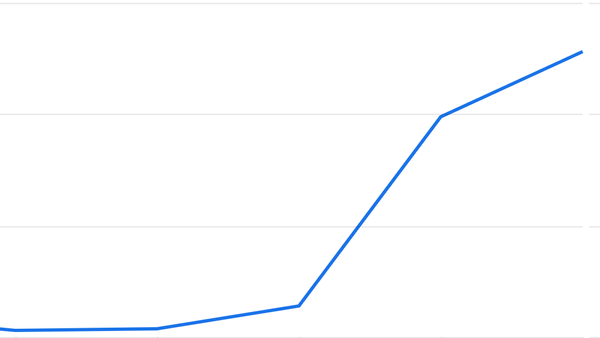Why Love IS Good Business
My case for thinking about marketing through an emotional lens.
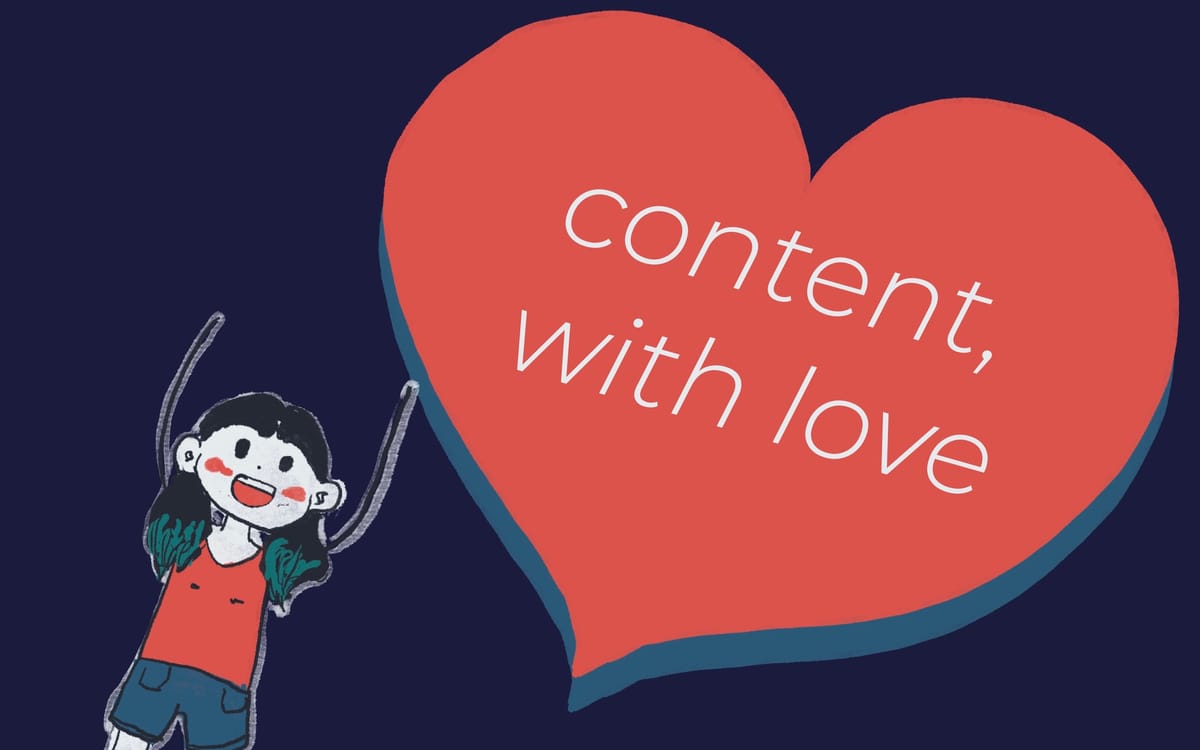
Loving what you do is a competitive advantage in marketing.
Yep. You heard me. All the squishy, fuzzy, disgustingly ineffable emotions are a competitive advantage and a business asset. Because great marketing is built on a foundation of empathy for the target audience. And what’s empathy but an annoying abstract set of emotions?
Whenever you hear somebody say “there’s no place for emotion, it’s just business”, laugh them out of the room. Or, if you’re feeling particularly understanding, send them a link to this essay. I’ll take care of it from there.
It’s NOT “Just Business”
Whenever somebody dismisses a conversation about emotional resonance, authenticity, or creativity by claiming that all that matters is “just business”, it makes my blood boil. Because that statement (and the mindset behind it) doesn’t make any sense!
What is “just business”? Can you point me to a place in the universe that only business resides in?
Is it perhaps on LinkedIn, where our accounts are constantly updating resumes with some interactive cringe thrown into the mix? Is it in the office, where we are supposed to be automatons clocking in and out to make the financial figures go up? Is it in our corporate slide decks, where we stuff every bit of jargon together with a healthy helping of bland stock images labeled ‘office’ and ‘work’?
I call BS on every single instance that is referred to as “business”. There is no such thing as “business only”. Because businesses are run and operated by… humans. Annoying squishy sweaty subjective humans. With human heads. And human hearts.
Why do we operate this way? Why do we imagine that the second the mere notion of “revenue” is whispered in the background, a magic spell turns all of our vulnerable hearts to stone?
If this really was a fairytale, the wizard who cast that spell would be a villain. Yet we treat it as a badge of honor when it comes to our professional lives, and aspire to spend 40 hours of every week like stone statues who only think about money.
Economics 101 From A Marketer Who Never Took an Econ Class
I’m definitely not an expert on economics or monetary theory (no matter what my writing portfolio might suggest), and I’ve not taken a single economics class in my entire life. But from running a business and being a very nerdy consumer of information, I’ve picked up a few things.
And one basic economic concept that I do think I have a grasp on is this – the entire point of economics and financial systems is to help us analyze the larger effects of individual actors within any market.
Don’t take it from silly old me, listen to Johnny Harris (who is also not an economist, but he makes pretty videos and gets a lot of views):
Johnny explains:
“We use the word "economy" to summarize what is literally billions of things. Billions of people making billions of decisions all connected to each other, and yet the result of all of these decisions is one of two things, this line either going up or going down.”
Every fancy financial model that some Wall Street broker brags about on dates is a variation of this very basic idea.
We have a lot of people who are constantly exchanging money for goods and services, and we want to abstract those details away to get a sense of whether collectively we are doing good or bad. A recession means that we are doing bad (and the line goes down), while an economic boom means we are doing good (and the line goes up).
The problem is: we forget that our financial models and concepts are an abstraction. We spend too much time zoomed out to remember what all of those numbers actually represent.
Back to Johnny for a moment:
“‘I lost my job today,’ says your sad looking neighbor one evening, which kind of freaks you out even more. Maybe you should be more careful about your spending. And now it's starting to spread.
What was just a decision to not buy bread anymore means that many employees in the neighborhood won't get paid and now they can't go out and spend money, which means that other businesses have less revenue to pay their employees, and now more people are hearing about this and deciding maybe they don't wanna be spending, and suddenly there are fewer and fewer transactions, less lending and investment.
And now this economy that was once buzzing with activity is experiencing a domino effect. Less stuff is being made, less stuff is being bought. Your neighborhood economy is literally shrinking.”
When you zoom back in, you need to think about all of the individual decisions made by individual people that actually lead to changes in the larger economy.
And thinking this way means you have to face an uncomfortable truth – every financial statement in the world is the result of a bunch of people acting based on their emotions:
- When you feel good, you spend money.
- When you spend money, the businesses you pay get more money.
- When those businesses get money, they can invest it into doing more business.
- When a bunch of businesses are investing money into operations, more stuff gets made.
- When more stuff gets made, the economy is good.
At the end of the day, “business” is literally dependent on making some humans feel a certain way. So, if we’re being real then every business is in the business of emotions.
What Is Business Value
I will be the first person to tell you that the quality of your marketing efforts depends on how well they help you achieve your business goals.
At the most basic level, any promotion you do should make your business money. Probably not directly or immediately, but all of your marketing work should be leading to some level of financial gain.
We’re marketers, we’re trying to help organizations sell products and services. Otherwise we’d be in some other profession (anybody else want to write novels?).
So, how do we tie this whole talk of emotional impact to achieving business objectives? Where are the OKRs that you can show to your boss? Hold on for just a second. Getting to those pretty reports and defining your KPIs requires us to expand our understanding of business value.
Numbers, whether we are measuring traffic or contract value, are not the only kind of business value worth tracking. Qualitative metrics and emotional impact are also a type of business value.
If the way humans spend money is dependent on their emotional state, then the way you make those humans feel is directly linked to how much money they’ll spend.
Financial metrics are, at the end of the day, a lagging indicator for the value you’ve provided with goods and services. People will give you money when you make them feel good. End of story.
Emotions and the ROI of Marketing Work
So, if we accept that businesses (and the economy at large) are dependent on how people feel, how do we tie that back to our marketing campaigns? Pontificating about economics is fun and all, but we’ve got jobs to do and results to deliver.
CONSIDER OPTIMIZING FOR CONTENT RESONANCE
Jay Acunzo recently posted about looking at your content through the lens of “resonance” as opposed to reach:
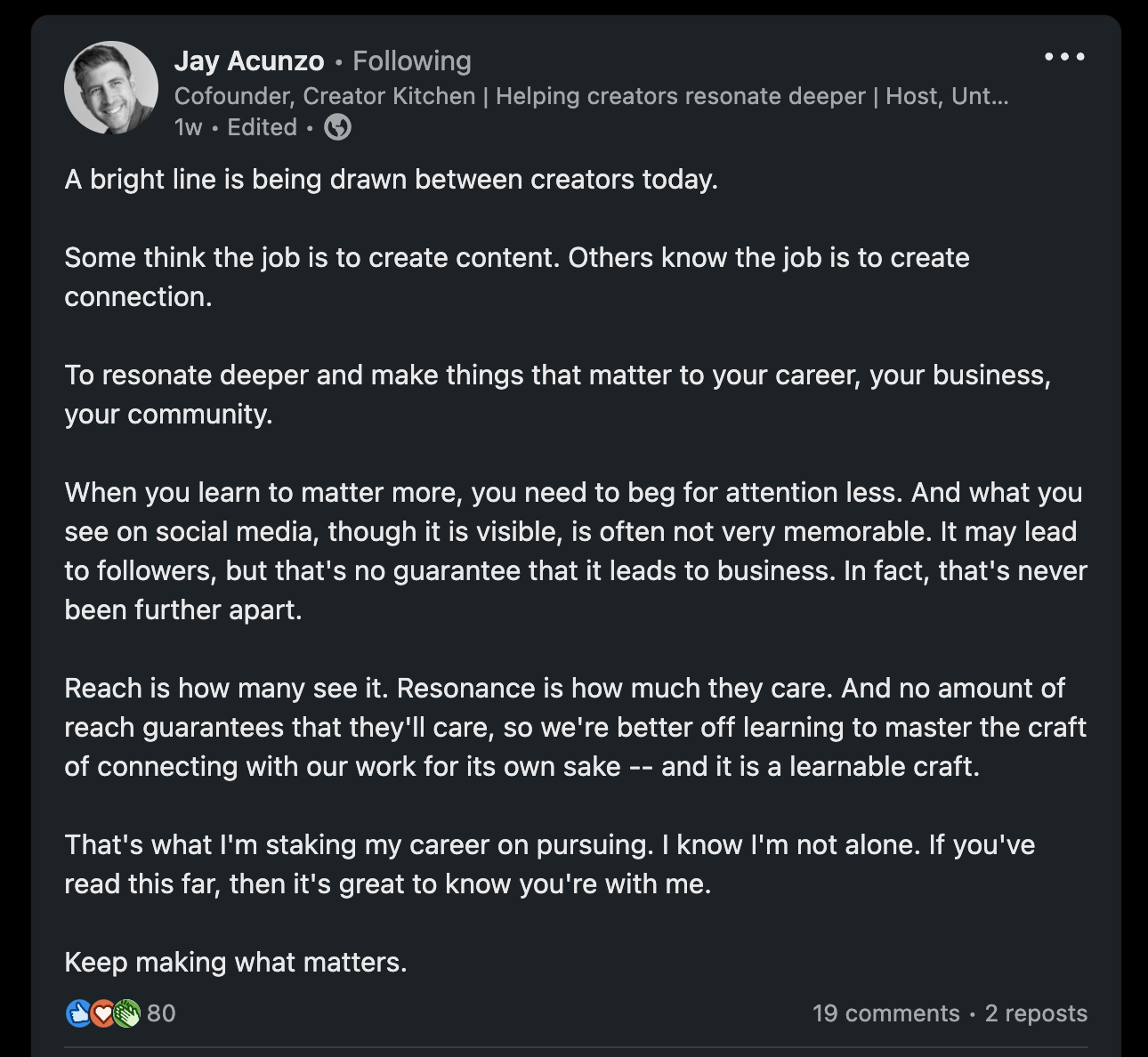
I love every bit of that post, but especially this statement:
“Resonance is how much they care. And no amount of reach guarantees that they'll care, so we're better off learning to master the craft of connecting with our work for its own sake”
The thing is: we can reach all the people in the world with our ads and content, but if none of them give a crap about the things we promote, did that attention even matter?
Attention, reach, and traffic are all lovely metrics and can signal that you’re doing something right. But when you aim for attention for its own sake, you forget that not all attention is made equal.
You want your target audience to care about the things you’re promoting. You want them to remember your brand and trust you enough to come back or make a purchase. Views alone will not fund your marketing department, or the business at large.
And I am not saying this to argue for revenue optimization or ditching marketing for direct sales. Not at all! I’m making the case that building brand equity and a strong reputation are the most effective route to financial ROI.
If you truly want those who come across your marketing materials to take action and benefit your business, you have to get them to care. And they won’t care if you never planned for emotional resonance in the first place.
Yes, Customers Do Care About Your Business
Take a look at this post from Joe Pulizzi from a month ago:
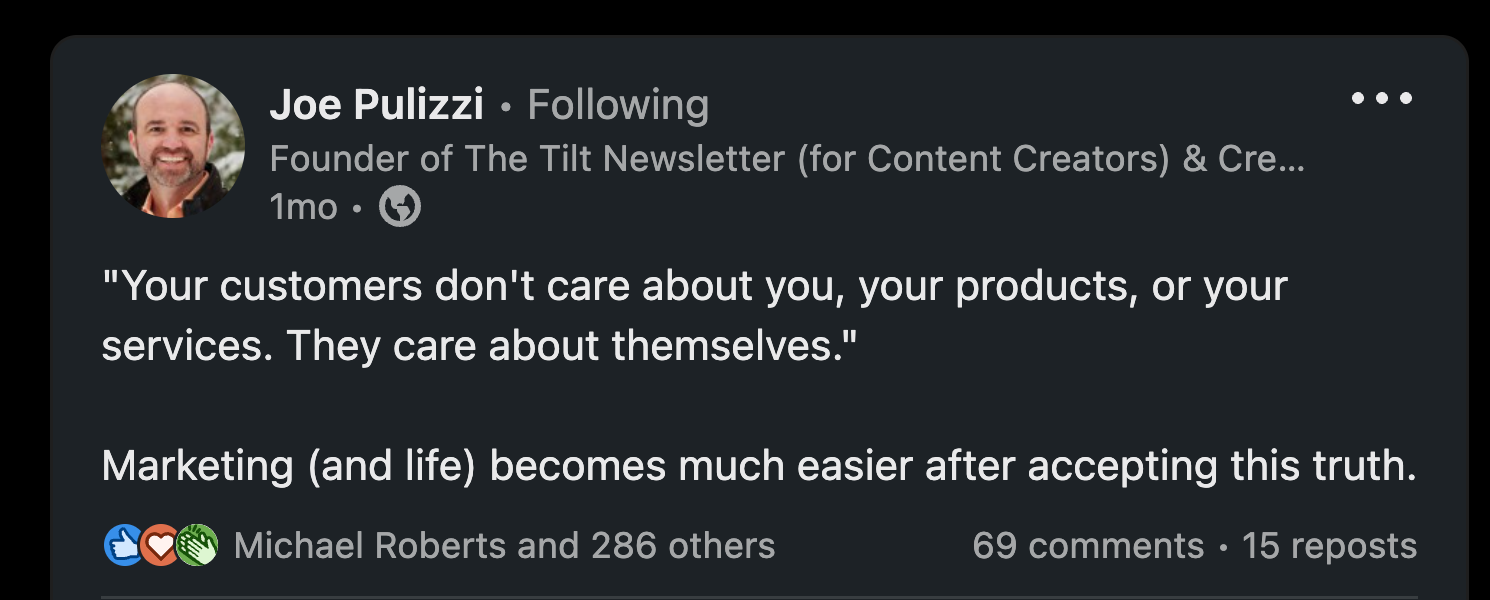
Joe is very smart and knows a lot more about marketing than I do. But in this case, he is dead wrong.
Because customers do care about your products, services, and your business. They care about how you are making them feel.
I found Joe’s post too late to comment myself, but the wonderful Rand Fishkin left a comment that sums up my views pretty well:
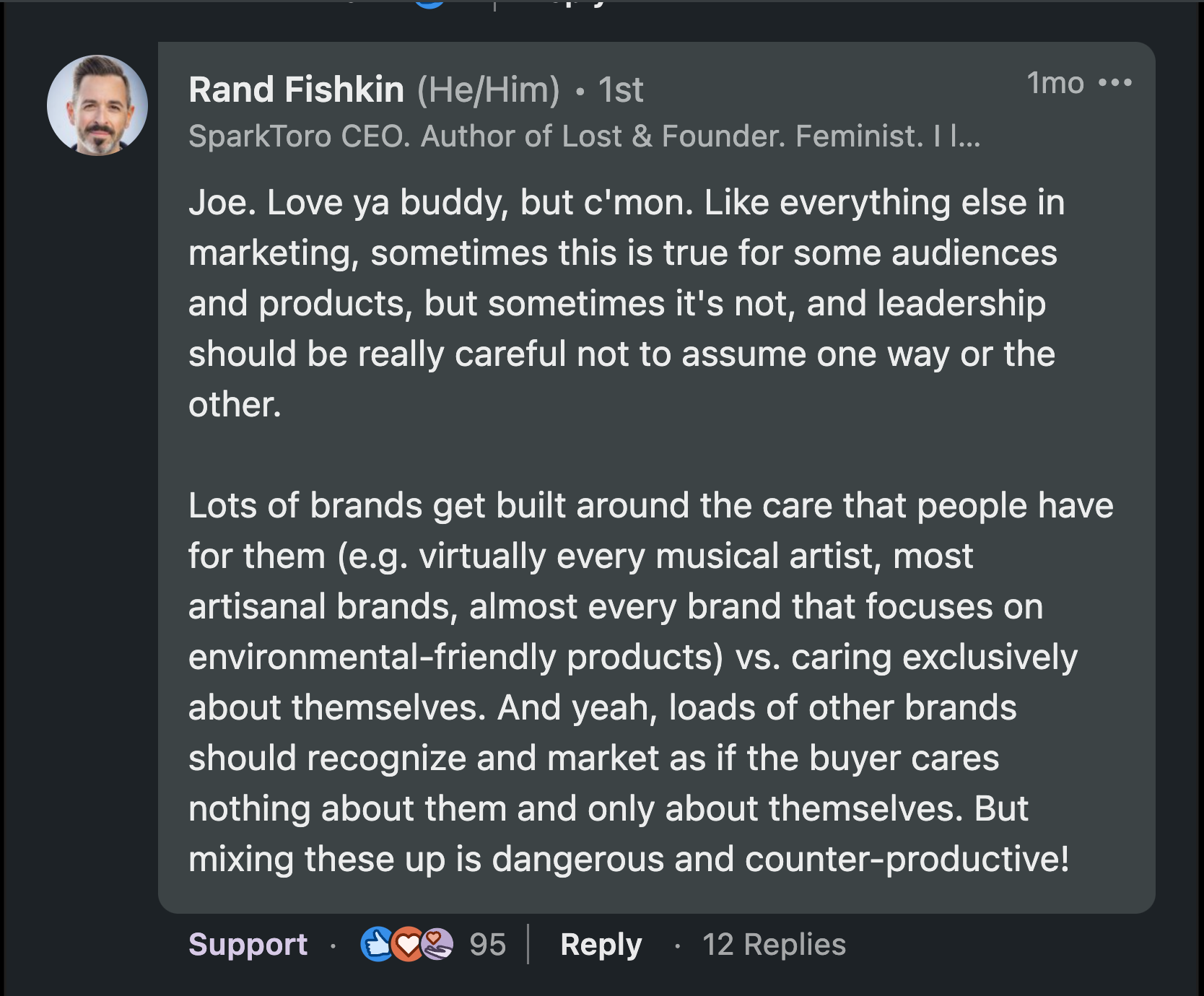
I admit that I’m biased to agreeing with Rand, since he’s one of my favorite people, but he has a point. A lot of brands are built on a foundation of mutual care between them and their audiences.
To get someone to buy from you, you need to earn some level of emotional investment from them.
Sure, if you’re buying a cheap consumer good that level of emotional investment might not go beyond “I’m hungry and this burger looks mildly edible”, but it’s still there. If that burger was moldy or sold by a guy who bragged about torturing puppies on the weekends, would you really still buy it?
And if you are marketing something that costs a significant amount of money, requires time and resources to implement, or expects the customer to come back again and again over a longer period of time…. I’ve got some bad news for you.
Because when that buying decision involves more than a day of thinking, you’re building a relationship. And relationships, like it or not, are all driven by messy, squishy, human feelings. To get any results from your marketing, you gotta hit all the right emotional notes.
Emotional Marketing & SparkToro
Let’s look at an example that’s very near and dear to my heart (and the cause for my bias in favor of quoting Rand at every opportunity I can find): SparkToro.
You see, SparkToro is a SaaS company that makes a pretty nifty audience research tool. They help marketers (like yours truly) analyze what certain groups of people do online, with a ton of use cases for content, PPC, SEO, PR, comms, and any other marketing jargon you might have in your typical rotation.
But what SparkToro’s product does isn’t the point. What matters for our purposes, is that I am obsessed with it.
I am an insanely dedicated fangirl for SparkToro. If you pop into any of their office hours, I’ll be spamming the live chat with silly jokes. If you look at any LinkedIn post from Rand or Amanda, I’ve probably already commented on it. And if you even whisper the name of their company in a marketing Slack that I happen to be in, I will magically appear and begin wistfully ruminating on how wonderful it is.
Why am I telling you all this, besides convincing you to close this newsletter and never deal with me again? Because my love for SparkToro has had a very tangible financial impact for both their business and mine.
If They Love You, They’ll Bring You Customers
You see, I love SparkToro so much that I’ve recommended it to a lot of people over the past year.
I’ve gotten on demo calls with other marketers, commented on many Slack threads and LinkedIn posts, and posted about how I use the tool on every social media platform that I have an account on.
And in my enthusiastic frenzy, I’ve convinced quite a few people to give SparkToro a try. I have directly heard from at least 10 people in the past year who purchased licenses for themselves or their entire teams because of my recommendations.
Word of mouth is powerful. And the most powerful word of mouth comes from a place of passion and love.
I really, really, REALLY love SparkToro. And most people can tell how sincere I am! My love for that software comes through in my word choice, my tone of voice, the glow in my eyes. Anybody that talks to me knows that I am not faking my love for it.
A Case Study: Content Produced With Love
Because I only have so many hours in a day to be a volunteer salesperson for somebody else’s software, I decided to scale up my fangirling and produce some content.
So, over the last couple of months, I did something kind of crazy. I wrote a 5-part and 20,000+ word series of guides to SparkToro. You can find the whole thing by going to the introduction, which will link you to every other post in the series.
This monster project took me 3 months to produce, not counting all the hours I’ve now spent on promoting it and pestering poor Rand, Amanda, and Casey on SparkToro’s team with questions. It required so much work that I’ve been too burnt out to touch this newsletter for a month and a half. I was so tired after publishing that I got sick.
I was not paid to write these guides. I was not even asked to do it. I did them entirely because I wanted to, and because I saw a need to educate marketers on this wonderful product that I could see them missing out on.
And yet… this labor of love was worth it. In every single way you look at it.
Impact for Me and My Agency
Let’s start with what these guides did for me and my agency, Kalyna Marketing.
Quantitative Results
In terms of quantitative metrics and brand awareness, the numbers are way above and beyond my projections (keep in mind that the guides were published on April 6, 21 days ago at the time of this writing):
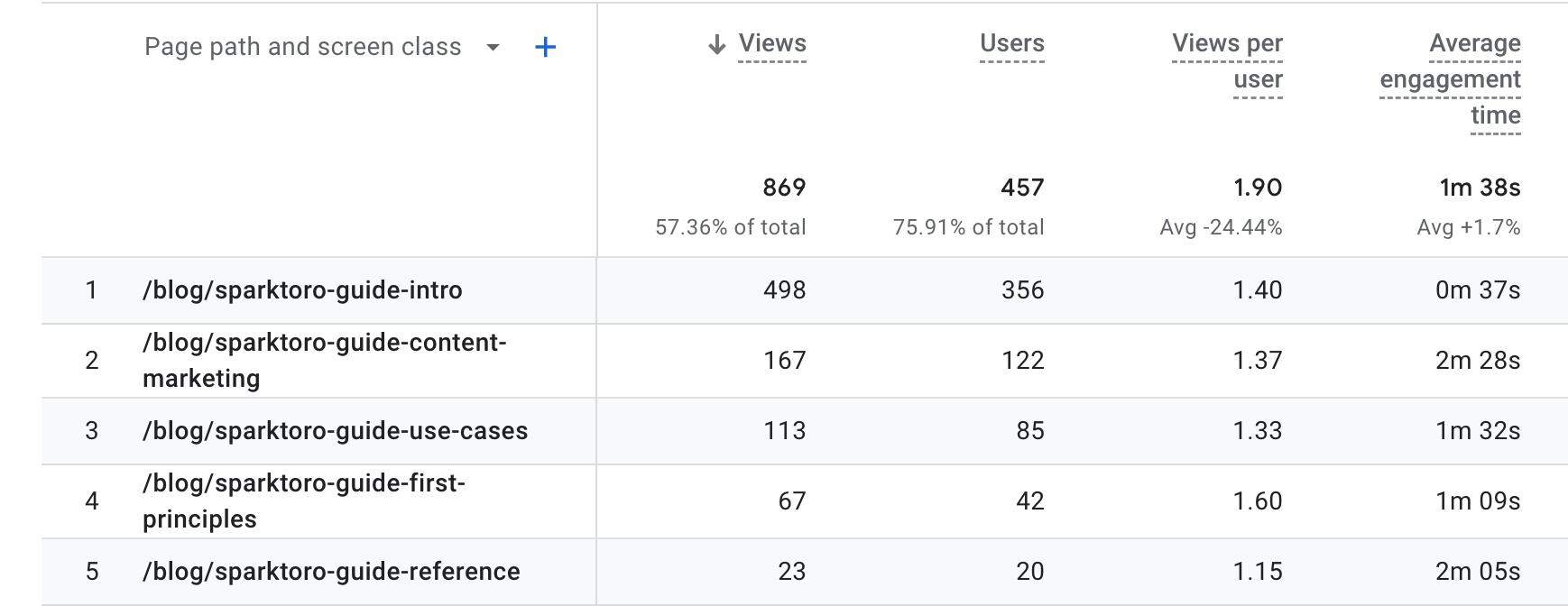
- On our website (from Apr 6 - 26), the guides have gotten 869 views from 457 users, with the average engagement time at >1 min for everything but the introduction (which is designed to mostly be a link hub)
- On LinkedIn, between my posts and Rand’s shares, content explicitly about the guides got 142 reactions, 37 comments, and 9 shares. I also gained 248 LinkedIn followers bringing me to a total of 1597
- On Twitter, Rand’s post got 25 likes, 21 bookmarks, and 3 retweets.
To put these numbers in perspective, since January 1 of this year, my agency’s website has gotten a total of 3,184 views. So these guides make up 27% of all traffic that we’ve gotten in the past 116 days, despite only being published for 20 of them!
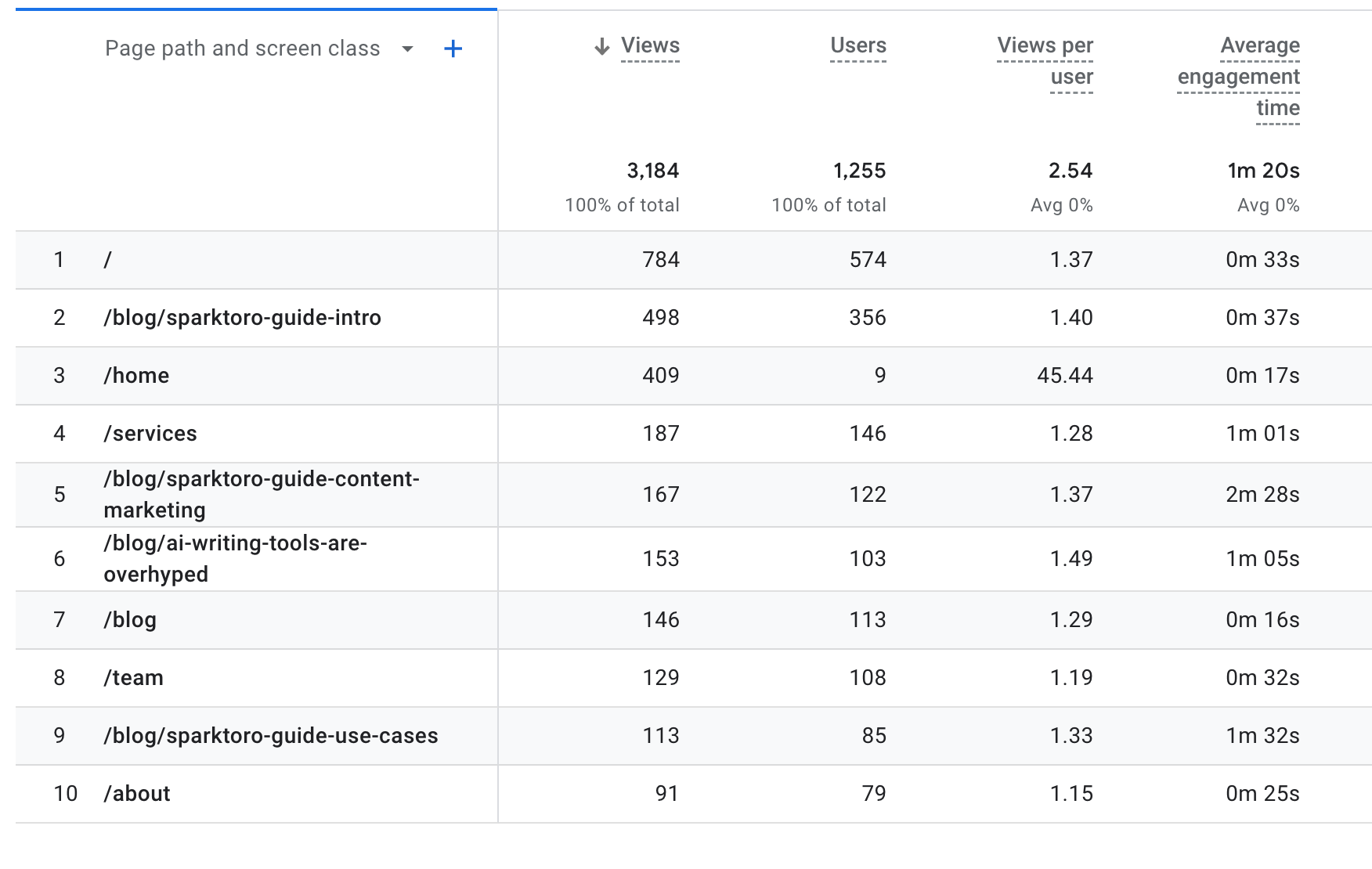
In addition, we got some pretty Google search rankings and a snippet, which I am preserving here mostly for bragging rights:
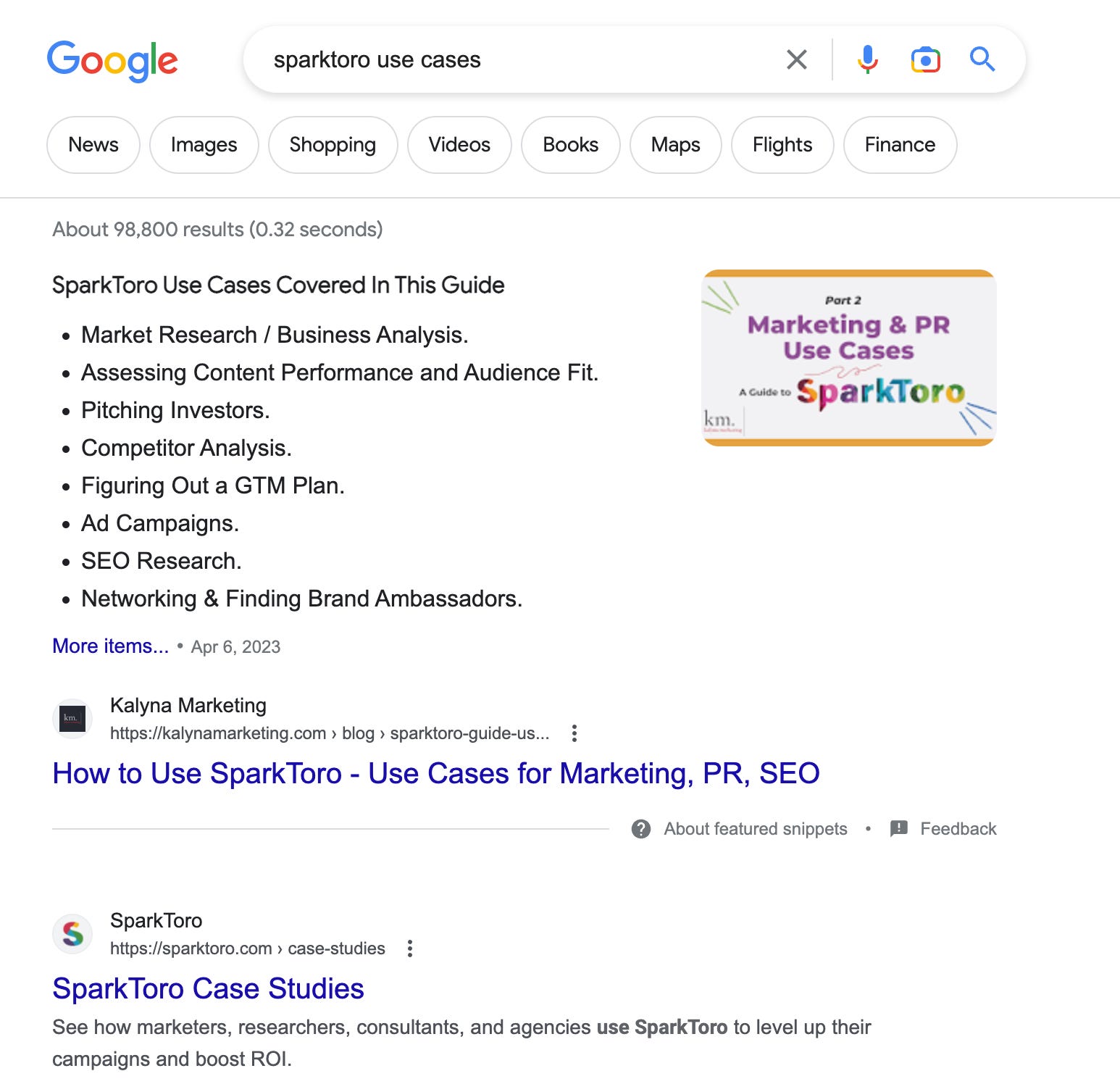
We’ve also gotten multiple new leads for the agency, and while I cannot give an estimate of contract value until all those negotiations conclude, there are more potential clients in my email inbox than ever before.
Qualitative Results
The numbers are fun, but as we’re talking about emotional resonance and impact, let’s get to the real fun stuff.
Here are some of the things that others have publicly said about the SparkToro guides:
“This is GREAT.”
“It’s about time someone did this.”
“Just what I needed.”
“A great series of guides.”
“Thank you for creating this resource.”
“Love this.”
“Wow, what a gift.”
I’ve also been getting messages every couple of days, thanking me for writing these and for helping people see the value in SparkToro when they couldn’t understand the tool before.
And at the end of the day, that’s what matters. People are resonating with this content. They are coming back to read more, as I can see from the new / returning users stats in GA4. They are sticking around, as session and engagement times show. And they are sharing them with others, as I’ve seen on LinkedIn, Twitter, in multiple Slack groups, and at least 2 marketing newsletters.
It’s only been 20 days, but these guides have already been the most impactful content I’ve ever put out.
Impact for SparkToro
Now, I do not have access to SparkToro’s analytics dashboard of financials, nor do I want to ask for any of that information.
But from what I can see, I have already been making an impact. I’ve seen multiple people comment that my guides convinced them to try SparkToro again or finally buy a license. I’ve also noticed many more LinkedIn posts tagging SparkToro and listing it as a great marketing tool.
And, conveniently, Rand himself has talked about my guides on a recent podcast appearance, mentioning me by name (start at 25:52):
For those who don’t want to watch the video, Rand described the impact of my series as follows:
“I bet that performed better for us than ranking for any keyword in Google possibly could.”
And that’s all the evidence I need.
Stop Being Afraid of Love in Business
I am showing you all of my results here not to brag, but to prove a point.
Often, when I talk about love, passion, and emotional sincerity in marketing – I’m met with skepticism. It’s easy to dismiss a 25 year old woman who advertises her intense passion as part of her personal brand. It’s easy to think that I’m full of crap or overly naive.
But my recent work is the most clear-cut case study I could possibly provide you with. These guides were a terrible business decision if viewed purely through the typical lens of immediate ROI and impact to my agency’s revenue.
Multiple people told me that I was crazy for doing this much work for free with no guarantee that SparkToro’s team would see these posts, let alone share them. Most agency owners would spend their time cold messaging prospective leads, setting up attribution models, or running ad campaigns.
Almost any other promotional efforts that I could have spent my time on would have made a lot more sense on paper.
But this series made sense to me emotionally.
I knew that I had something important to say. I cared deeply about sharing why I love this software so much and how other marketers are missing out on its value to their work. And I wanted to share that love with the world, in the hope that maybe at least one person would read my content and fall in love with SparkToro too.
And that’s the beautiful thing about approaching your marketing through an emotional lens – once you accept that emotions are a valid and valuable business consideration, you’ll be able to find opportunities and open up doors that nobody thought were possible.
Top 3 Reading Recommendations
- “Buzzfeed, Gawker, and the end of the 2010s” by Max Read. An incredible look at the media area of the 2010s, when clickbait ruled us all and Buzzfeed were the best content marketers around.
- “I Ruined Two Birthday Parties and Learned the Limits of Psychology” by Adam Mastroianni. A hilarious look at how the findings of psychology studies should be viewed as extremely context-dependent.
- “Thinking About Working With a SaaS Content Agency? What You Should Know” by Derek Flint. Derek has put together a great look at how in-house B2B tech marketers assess content agencies.
Musical Minute
”Heaven, Iowa” by Fall Out Boy
Fall Out Boy were one of my favorite bands as a moody teenager, and their newest album includes one of the most beautiful songs that I’ve heard in my entire life.




